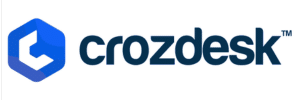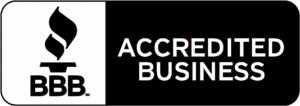A convenience store must rely on robust POS inventory management to succeed. After all, c-store customers shop there for quick service, a large selection of products, and a stocked inventory.
Anywhere between a quarter and a half of customers are unlikely to return to a retail store in which they faced a product that was out of stock.
Depending on the size of your business, that could mean thousands to even millions of dollars a year in lost revenue. That means that proper inventory management for convenience stores is of the utmost importance.
Luckily, your point of sale system can help you improve this. So today, let’s look at 5 features you should look for in your convenience store POS system.
? Key Takeaways:
- Convenience stores must address inventory challenges like high turnover, shrinkage, and supplier inconsistencies with automated tracking and security measures.
- Best practices include tracking fast- and slow-moving items separately, conducting cycle counts, and using real-time inventory systems.
- Optimizing shelf space and using strategic promotions help improve product turnover and reduce waste.
- Leading POS solutions for inventory management include KORONA POS, Square POS, Clover POS, Epos Now, and Lightspeed POS.
- Key POS features include ABC analytics, reorder level optimization, automated ordering, best/worst seller identification, and real-time tracking.
- KORONA POS provides an all-in-one solution for convenience store inventory management without needing extra apps.
Convenience Store Inventory Management Challenges and Solutions
Managing inventory in a convenience store is a balancing act. Stock management becomes complex with high product turnover, diverse SKUs, and limited storage space. Without the right strategies, store owners risk stockouts, overstocking, and lost revenue. Below are key challenges and effective solutions to optimize inventory management.
Challenge #1: High Inventory Turnover
Convenience stores sell fast-moving consumer goods (FMCGs) that require frequent restocking. This high turnover makes it difficult to track inventory accurately. Without real-time monitoring, stockouts of essential items like snacks, beverages, and tobacco can lead to lost sales and dissatisfied customers. Overstocking, on the other hand, ties up capital and increases waste.
Solution:
Implement a POS system with automated inventory tracking. A robust POS system updates stock levels in real-time, preventing shortages and excess inventory. Integrated demand forecasting tools can also help predict sales trends, ensuring timely replenishment of popular items while minimizing overstock.
Is inventory management a headache?
KORONA POS makes stock control easy. Automate tasks, generate custom reports and learn how you can start improving your business.
Challenge #2: Shrinkage and Theft
Shrinkage from theft, spoilage, and administrative errors is a major concern for convenience stores. Employee theft and shoplifting can significantly impact profitability. Poor inventory tracking and lack of security measures make it easier for products to go unnoticed.
Solution:
Use advanced security measures and inventory audits. Install security cameras and anti-theft devices, conduct regular cycle counts, and integrate inventory tracking with employee management. A POS system with role-based access controls helps prevent internal theft by restricting unauthorized stock adjustments.
Challenge #3: Managing Perishable Goods
Many convenience stores sell perishable items such as dairy, sandwiches, and fresh produce. Without proper inventory tracking, stores risk food spoilage, financial losses, and potential health risks for customers. Expired products can also damage the store’s reputation.
Solution:
Adopt FIFO (First In, First Out) inventory management. This ensures older stock is sold before newer shipments. Additionally, implementing expiration date tracking within the POS system alerts staff when products are nearing expiration, reducing waste and improving inventory turnover.
Challenge #4: Supplier Inconsistencies
Convenience stores rely on multiple suppliers for different product categories. Delayed deliveries, inconsistent order fulfillment, and price fluctuations can disrupt inventory levels, leading to stockouts or over-ordering.
Solution:
Establish strong supplier relationships and use automated reordering. Work with multiple vendors to ensure backup supply options. A POS system with vendor management features can automate restocking based on sales data, ensuring a steady flow of high-demand items.
Challenge #5: Limited Storage Space
Unlike supermarkets, convenience stores have limited backroom storage. Overstocking bulky or slow-moving items can lead to cluttered shelves, making it harder to manage stock effectively.
Solution:
Optimize shelf space using sales data. Analyze which products generate the highest revenue and prioritize them in prime shelf locations. Implement just-in-time (JIT) inventory practices to maintain efficient stock levels without overcrowding storage areas.
Best Practices For Managing C-Store Inventory
Managing inventory in a convenience store requires precision, efficiency, and consistency. Here’s what works best:
Track Fast-Moving and Slow-Moving Items Separately
Identify best-selling items (energy drinks, chips, cigarettes) and ensure consistent stock levels. For slow movers, limit orders to prevent cash flow issues. Use sales data to determine which products should take up prime shelf space and which should be phased out. For example, If bottled water sells out every three days, set an automated reorder when stock drops below a threshold to avoid stockouts.
Schedule Regular Cycle Counts
Instead of full inventory audits, conduct frequent cycle counts on high-risk items like alcohol, tobacco, and lottery tickets. This ensures stock accuracy and reduces shrinkage. For instance, you could count lottery tickets weekly and compare POS records with physical inventory to detect discrepancies.
Leverage Supplier Deals, But Don’t Overstock
Bulk purchases can save money, but excess stock leads to waste, especially for perishable goods. Order only what you can realistically sell. If buying 100 cases of soda saves 10%, ensure you can sell them before expiration, or the savings are wasted.
Use a Real-Time Inventory System
A POS with inventory tracking helps prevent shortages and overstocking. Manual tracking leads to errors and shrinkage. An automated system alerts when stock is low, helping you reorder on time.
If the system shows only five packs of a popular gum left, reorder before customers request it and leave unsatisfied.
Optimize Shelf Space Use Promotions to Move Slow Inventory
Place high-demand items at eye level and near checkout. Use sales data to optimize shelf layouts and eliminate underperforming products. Adjust the layout to increase sales if protein bars sell better near the energy drinks than in the snack aisle.
You can also discount slow-moving stock before it expires or takes up unnecessary space. Bundle slow sellers with fast movers to improve turnover. For example, “Buy one, get one free” on a slow-selling candy bar can drive impulse buys and free up shelf space.
Top Inventory Management Software Solutions for Convenience Stores
KORONA POS
KORONA POS overview
KORONA POS is one of the best POS for convenience store owners seeking a POS system.
It emphasizes features crucial for their business, like prioritizing fast checkout speeds to keep customers happy.
Additionally, KORONA POS offers robust inventory management, employee permission controls, and insightful sales reporting, allowing convenience stores to maintain control over stock, staff, and overall business performance.

Pros
- Excellent customer support
- ID customer verification
- Multi-store capacities
Cons
- Learning curve
- No fuel integration
Korona POS Pricing
Core
$59/mo
- Unlimited users and sales
- Customizable dashboard
- Core checkout functionality
Retail
$69/mo
- All core features
- Inventory counts
- Stock management
Enterprise
Custom
- KORONA invoicing
- KORONA franchise
- KORONA integration
Square POS
SQUARE POS overview
Square POS, created in 2009, offers a free POS solution for businesses to take payments and manage sales.
It’s particularly popular with startups and smaller businesses due to its user-friendly interface and flexible options.
Square POS has become a viable alternative to Lightspeed POS for many merchants. Here are some benefits and cons that make Square POS a popular Lightspeed alternative.
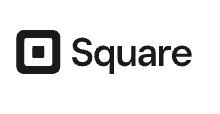
Pros
- Free to use (Basically)
- Flexible payment methods
- Great integration features
Cons
- Not ideal for complex and retail businesses
- Poor customer support
- Not ideal for businesses with high sales volume
- Insufficient reporting metrics
Pricing
Free
From $0-$153/mo
- Point of sale app
- Inventory management
- Sales reporting
Plus
Starts at $0/mo
- Advanced inventory management
- Employee management features
- In-depth sales and customer reports
Premium
From $0 to $69/mo
- Deposit management for appointments
- Custom intake forms and questionnaires
- Waitlist management
- Advanced reporting and analytics
Clover POS
Clover POS overview
Clover POS offers an innovative solution beyond just processing payments when choosing a POS system for your convenience store.
Clover POS provides tools to gain valuable insights into your customers and boost engagement.
It offers a variety of hardware options, like countertop terminals, handheld devices, and customer-facing displays.

Pros
- eCommerce integration
- User-friendly and intuitive
- Offline mode
Cons
- Commitment and termination fees
- Potential business disruptions
- Complaints about custom support
Clover POS Pricing
Starter
$60/mo for 36 months
- Item and category management
- Stock-tracking by item
- Itemized order creation
Standard
$135/mo for 36 months
- Item variants
- Itemized returns and exchanges
- Scale integration for orders by weight
Advanced
$190/mo for 36 months
- Flexible repayment terms
- Weight scale
Epos Now
EPOS NOW overview
Epos Now is also considered one of the best POS for convenience stores. They highlight features like efficient inventory management, quick checkout with easy-to-use interfaces, and real-time sales insights to aid decision-making.

Pros
- Cloud-based
- ID customer verification
- Multi-store capacities
Cons
- No free trial
- No fuel integration
- Early termination fees
- Poor customer support
Pricing
Complete system pricing
$999 one-time cost
- Touchscreen POS system
- Secure cash drawer
- High-speed printer
Handheld system pricing (Epos Pocket)
From $0 upfront + $44 per month to $189 upfront + $24 per month
- Epos Pocket
Tablet system pricing
$599
- iPad POS System
- Android POS System
Lightspeed POS
Lightspeed Retail overview
Lightspeed POS goes beyond basic sales. This cloud-based system empowers retailers with features for inventory control, staff management, and marketing tools.
Centralize operations, gain valuable insights, and boost your bottom line with Lightspeed’s comprehensive retail management solution.
Pros
- Centralized employee management
- Built-in marketing tools
- Cloud-based accessibility
Cons
- Customer service issues
- Dependence on internet connection
Lightspeed Retail Pricing
Basic
$109/mo
- Registers
- Free training and onboarding resources
- Dedicated account manager
Core
$179/mo
- Lightspeed B2B
- Accounting
- eCommerce
Plus
$289/mo
- Omnichannel loyalty
- Advanced reporting
Software Features to Consider That Help Manage Inventory For Your Convenience Store
1. Advanced Reporting – ABC Analytics for Your Convenience Store Inventory Management
Your POS software should have advanced inventory reporting features such as this. Using sales history and basic product information, ABC retail analytics classifies each item in your store by its value to your business, giving it an A, B, or C grade. This gives you more actionable data, helping you with ordering, shelving, promotions, and store layout in your convenience store.
2. Reorder Level Optimization and Min/Max Levels
Your convenience store point of sale software should also assist with your ordering procedures. Smart reporting allows you to set par levels for each product, automating ordering. These programs also take estimated delivery times into account, keeping your inventory always up to speed.
Even better, your POS can suggest the minimum and maximum par levels for you. By analyzing past orders and sales histories, the point of sale can predict optimal levels for each of your products going forward. If desired, these can be manually adjusted as well.
3. Create Stock Order Cycles and Automatic Ordering
A great point of sale solution can also create recurring order cycles for each individual product. Again, these can be manually updated, but the software identifies the ordering pattern and automatically requests the new order according to the cycle. Once implemented, your POS completes it entirely.
4. Best and Worst Seller Notification
It’s optimal to have a system that quickly identifies your best and worst performers. It takes guessing out of the equation and helps you guarantee maximum profits. As a convenience store owner, it also helps you identify brands that might need to be changed. Because you need to carry so many different products, you don’t have the luxury of carrying so many brands. So when one isn’t selling well. It might be a tip-off to try out a different brand for that product.
5. Real-Time Inventory Management
With your cloud POS solution, all inventory updates are made immediately upon order, delivery, sale, or return. This ensures that your inventory count is accurate and you never be out of stock.
Make Managing Your Convenience Store Inventory a Breeze With Korona POS
So your C-store POS should have a variety of tools to make your inventory easier to navigate, more accurate, and less time-consuming. So look for these 5 tools:
- ABC Analytics
- Minimum and Maximum Levels with Reorder Features
- Auto Ordering and Order Cycles
- Top and Bottom Seller Identification
- Cloud Inventory Management
KORONA POS has all of these features built-in, so you don’t have to worry about using any other convenience store inventory management tools or services. Our software can even help with your C-store marketing strategies; it’s truly an all-in-one point of sale solution for convenience stores. Click below to get started with KORONA POS.


